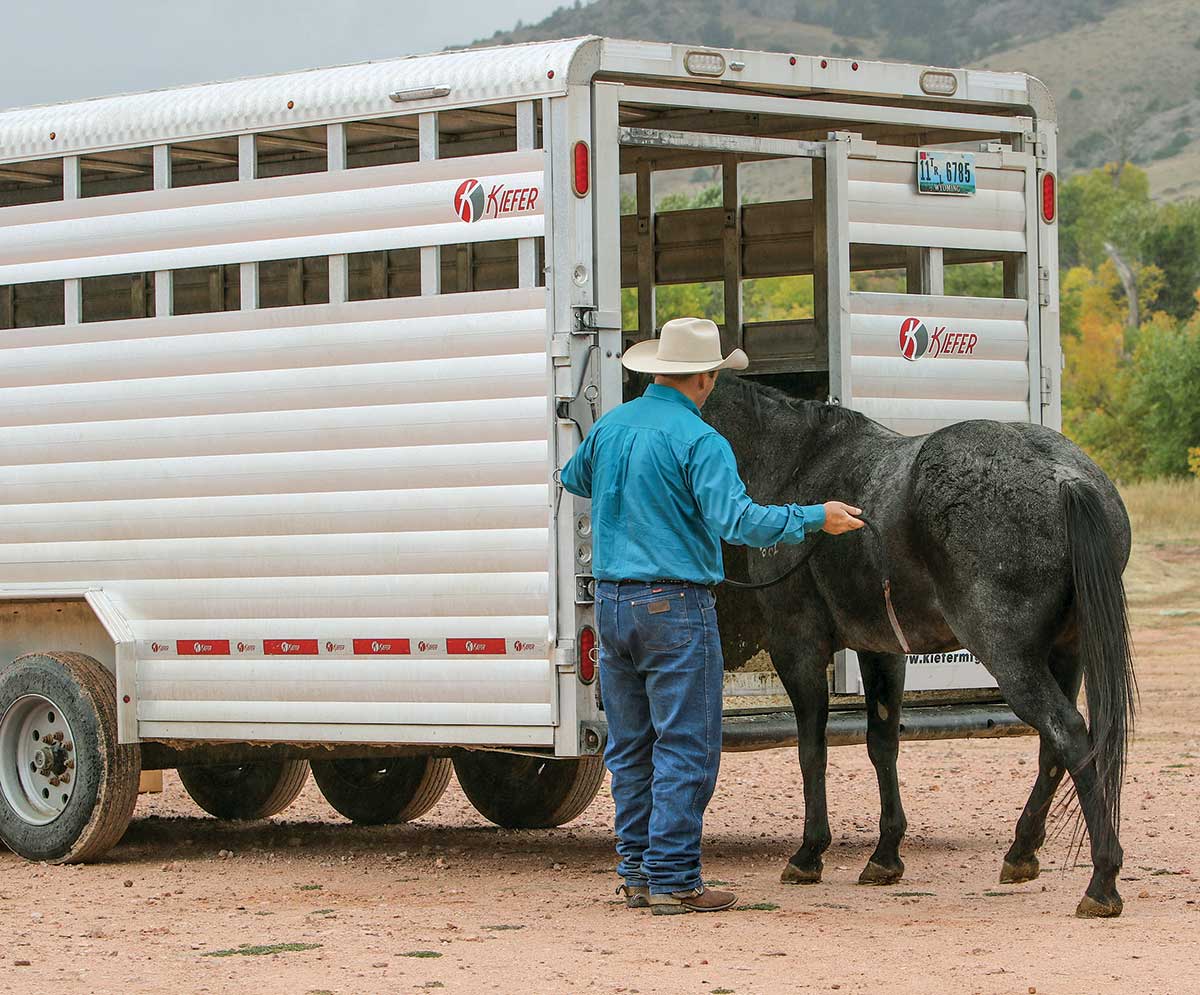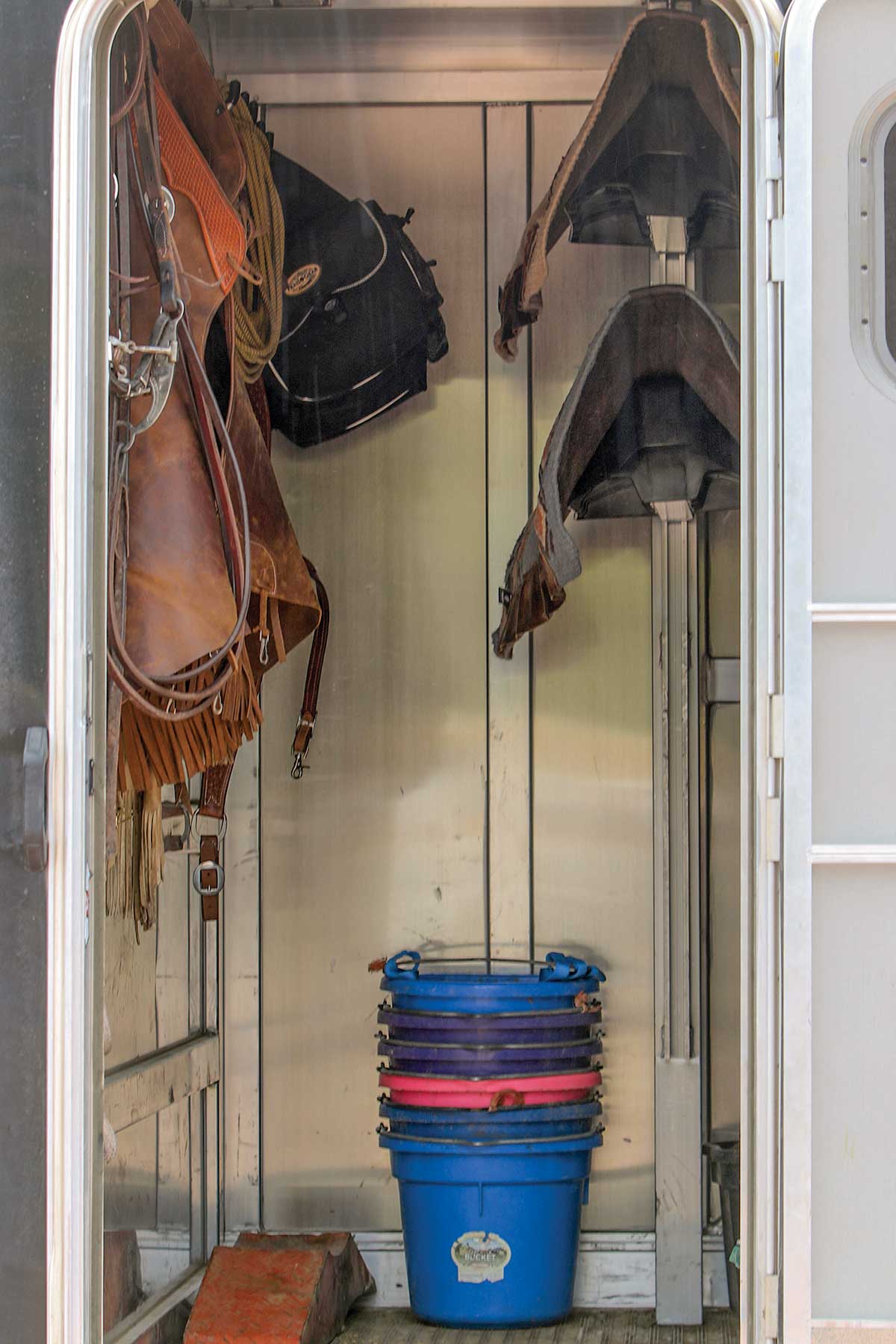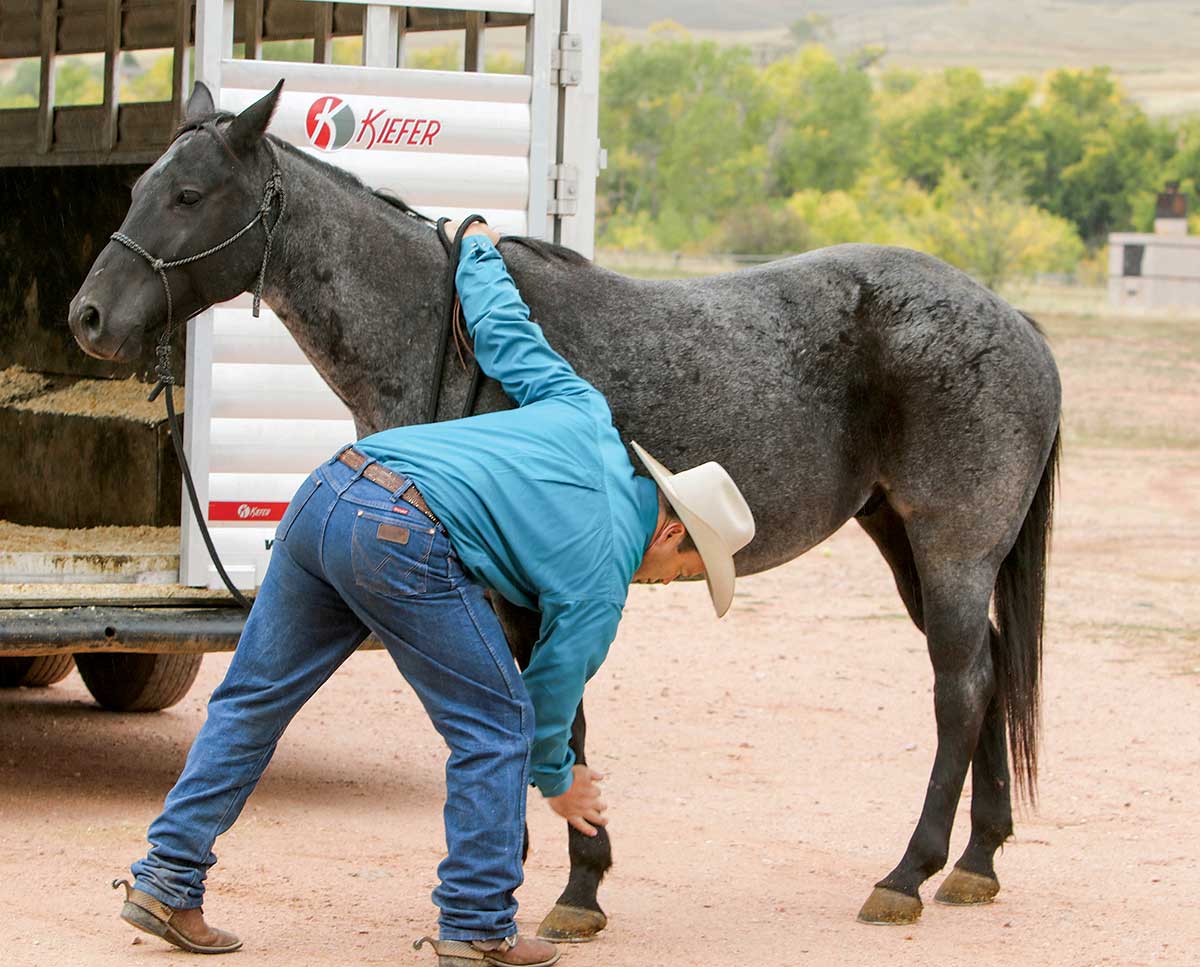
You’re headed back from your trail ride. You reach the trailer, unsaddle, brush off your horse, get him loaded, and head down the road. Twenty minutes! It’s a new record time.
This is exactly the behavior that gets riders in trouble. After a long day of riding, and especially after multiday trips, it’s tempting to hurry up and get on your way. When you do this, you create chaos. You hurriedly go through the motions and leave yourself open to forget important things, such as a saddle left on the ground. You overlook the once-over that ensures that your horse is injury-free and your equipment is in good repair.
Over time, your rushed process causes your horse to become anxious at the trailer, which makes your ride back more difficult and puts a sour tone on an otherwise-pleasant experience. Here I’ll share how you can make the post-ride trailer experience a safe and positive one.
Make a Checklist
At home, make a checklist before you leave on your trip. Include tack, an emergency kit, feed, buckets, and anything else you’ll need. Your emergency kit should include Banamine (as prescribed by your veterinarian) and bandage materials to treat minor cuts and scrapes until you make it to a vet.
After your ride, use your checklist to ensure that everything you’ve brought is accounted for and put away. If you break tack or lose a hoof boot, make note of it so you can replace it.

Post-Ride Anticipation
As you head back to your trailer, mentally prepare yourself so you don’t become overly anxious and affect your horse’s emotional state. If you get anxious your horse will, too. You don’t rush him through the trail ride; so don’t rush him headed home.
At the trailer, work your horse before you dismount; not into lather, but you don’t want him to think his job is over as soon as the trailer’s in sight. This thinking is what leads to the ride-home jig. Trot circles, bend, flex, back up, then walk him out. Make sure he’s cooled off, calm, and focused before you call it a day.
One Step at a Time
Before you load your horse, he should be relaxed and comfortable. If you rush him, he’ll feel as you do when you’re rushed in and out of an appointment—emotionally run-over. Instead, tie him to the trailer and loosen the cinch, but don’t get in a hurry to jerk the saddle off. Let him relax as you prep your tack room.
Organize your tack room so that when you take off your horse’s gear you don’t have to struggle to put it away. Hang up your bridle, pull out grooming supplies and water buckets, and make sure everything’s clean and ready to use.
Unsaddle your horse, then run your hands over his body to check for sore spots, broken hair, and other injuries. Then groom him thoroughly. I like to give my horse a liniment rubdown, which helps with muscle soreness. I also disinfect my cinches and hang them up exactly how I want to take them back down. This prevents girth itch and future skin irritation, and will make it easier to saddle next ride.
After your horse has cooled off, but before you load up, make water available. Offer it once, and don’t let him play in it. If you let him guzzle it, he can get a gut ache.

Prep Your Trailer
Check your surroundings before you park your rig to give your horse the best opportunity possible to load and unload. Sometimes trailheads don’t give you many options. Choose the most level and least obstructed area possible.
After your ride, inspect your trailer and the load-up position. Not all trailers have good internal lights so bring a flashlight or head lamp if there’s a chance you’ll load up after dark. Lights in the door help illuminate the doorway. Though horses have great vision at night, they don’t seem to mind a little help.
Final Thoughts
Keep safety top of mind at each stage of your ride. Make sure you haul in a safe trailer, free of sharp edges, poor gate latches, and other hazards. Drive smoothly; don’t jerk around corners, slam on brakes, or accelerate abruptly. Be mindful of your horse’s experience, and you’ll avoid trailer balkiness, anticipation, and other unsavory post-ride troubles.
Trainer, clinician, and lifelong cowboy Ken McNabb hails from Lovell, Wyoming. He helps riders and horses build and enjoy partnerships working on the ranch and riding on the trail. His show, Discovering the Horseman Within, airs weekly on RFD-TV. Learn more about McNabb and find his clinic schedule at kenmcnabb.com.







